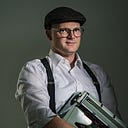It’s the scale of the fires that gets me going. I used to work in the then-Victorian Department of Environment and Sustainability which is responsible for fire management on public land, albeit in a desk job, but I have some sense of what’s happening on the ground and just how far from the normal range this year’s fire season is, and how badly it bodes for the future. Here’s another visualisation of Victoria for some historical context, put together from publicly available fire maps. https://twitter.com/jacintakong/status/1213585796940341249?s=20
It’s the intensity of the fires that gets me going. I first saw a pyrocumulus cloud on rain radar and satellite photos when I was working at DSE during the 2006–07 fires. On Black Saturday in 2009, I was flying into Melbourne about 2pm and I saw the pyrocumulus cloud above the Kinglake fire. The fire activity that was happening on Saturday was totally outside the realm of either of those events. It was happening in a 500km line on both sides of the Great Divide from east Gippsland into southern NSW, and there were at least six pyrocumulus clouds. Nothing survives fires like that. The crowns of the trees burn and they don’t regenerate.
Why is this a big deal? Because these 5 million hectares of forest provided all sorts of things that we just take for granted, like air, water, decomposition, habitat for the insects that pollinate our crops, biodiversity values, spiritual values, cultural values etc. And like that, it’s gone.
And the warming that’s already baked in will see that more goes next year and in the years after that. We’ll respond and life will go on and the vegetation communities will change, but we are diminished and I am grieving.
